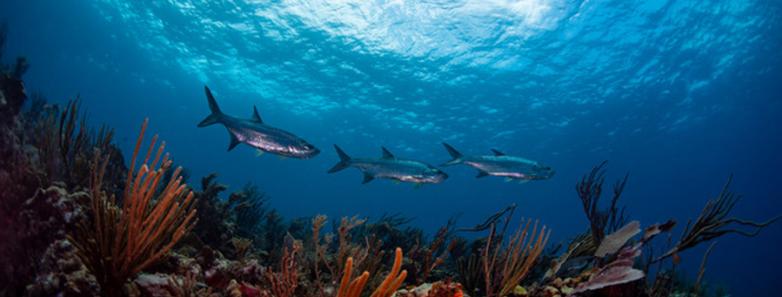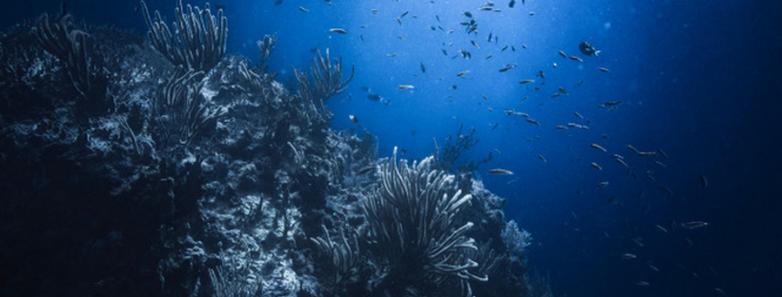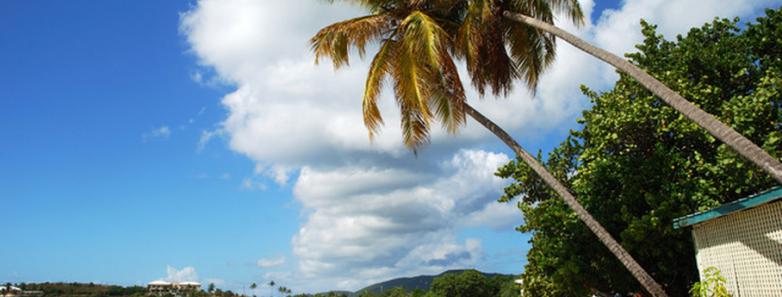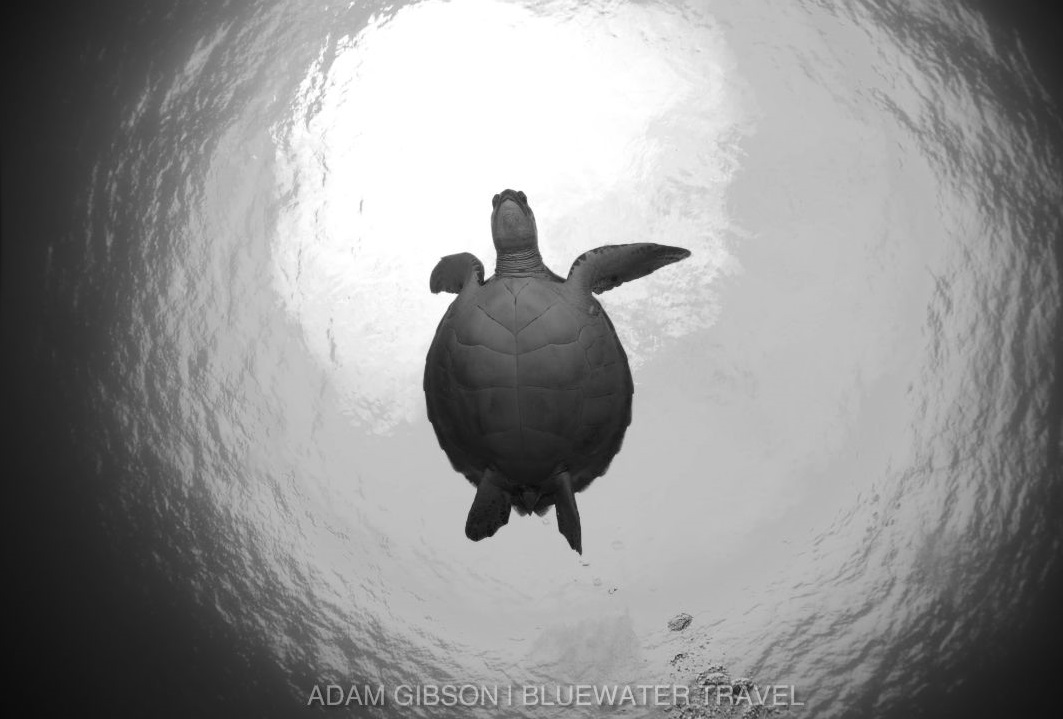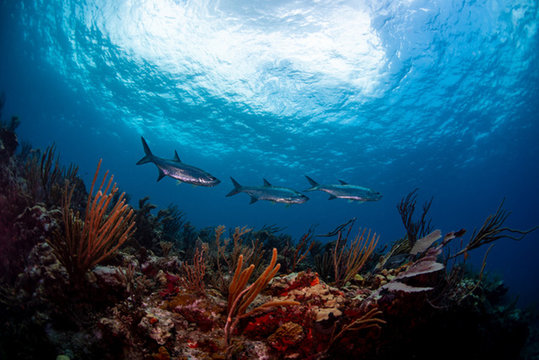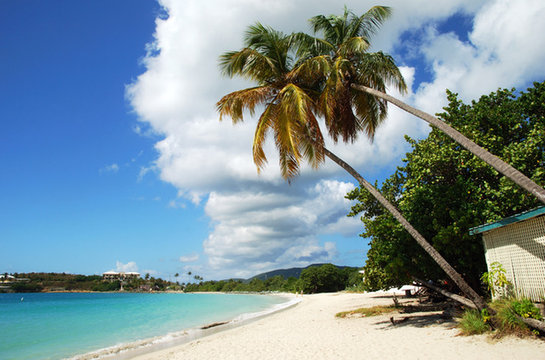SCUBA DIVING IN St Thomas
st Thomas scuba DIVING HIGHLIGHTS
St Thomas's convoluted volcanic coastline offers up a wealth of dive sites, healthy reef life, and some unforgettable underwater topography. Diving St Thomas is relaxing and straightforward, and the perfect addition to a Caribbean vacation.
For another volcanic destination with fascinating underwater topography, check out our Hawaii diving guide.
JUMP TO:
Marine Life & Environment - Top Dive Spots - Diving Conditions
How to Get There - How to Dive St Thomas - Best Time to Dive
st Thomas scuba DIVing RESORTS & Liveaboards
Scuba diving in St Thomas is exclusively through small, privately-owned operators based on the island. Most dive shops are found along the south coast of St Thomas.
There is a wide range of accommodation to choose from, including high-end all-inclusive resorts through self-catered rentals and Airbnb.
INTRO TO scuba diving in st Thomas
Vibrant and cosmopolitan, the island of St Thomas is located in heart of the Caribbean and offers families and couples a distinctive taste of island paradise. St Thomas lies 50 miles (80km) east of Puerto Rico and, as one of the US Virgin Islands, is a popular stop on the itinerary of cruise ships. The diving here is reminiscent of other Caribbean islands and also Hawaii, where volcanic origins have created a fascinating subsurface maze of caves, caverns, and lava tubes to explore. These nooks and crannies provide the perfect environment for encrusting corals, over 400 species of fish, invertebrates, and several species of turtle.
Top dive spots in st Thomas
These are some of the best scuba diving sites in St Thomas:
1. Coki Beach
This popular beach dive on St Thomas's north coast boasts calm, clear conditions and some fantastic snorkeling close to shore. The two shallow reefs here at 40 and 50 feet are great for beginners as well as making for a fun night dive. It's not uncommon to spot moray eels, rays, and barracuda, as well as turtles relaxing on the reef.
2. Congo Cay
To the northeast of St Thomas, Congo Cay offers dramatic pinnacles and ridges and can offer up some brisk currents best suited to more experienced divers. The site is smothered in encrusting corals and soft coral formations, home to plentiful reef fish as well as pelagics such as tarpon and Spanish mackerel.
3. Cow and Calf Rocks
A popular site for intro dives and certifications, Cow and Calf are two rocks on the southeast of St Thomas, so-called because whalers would mistake them for a mother whale and her calf. Both sites feature fascinating topography with ledges, overhangs, and a maze of swim-throughs. The patchwork of colorful soft coral is equally impressive. Divers can spot many dark-dwelling creatures within, as well as jack and turtles around the outside of the rocks.
4. Buck Island Point
This not-to-be-missed dive is located on the western tip of Buck Island and is one of the area's liveliest reefs. All manner of unusual critters can be discovered here, including West Indian sea urchins, arrowhead crabs, spotted eels, and octopus chutes. A mini wall slopes from 45 down to 80 feet where stingrays and conch can often be found resting in the sand. Large schools of grunt and snapper complete the dive!
5. Cartanser Senior
This steel-hulled freighter was originally abandoned in 1970 and sunk in a cove the wasn't accessible to divers. In 1979 she was raised and re-sunk on the west side of Buck Island, creating a new dive site and great artificial reef. She now lies on her port side in 50 feet of water and is the ideal environment for yellowtails, tang, angelfish, and sergeant majors, as well as grouper and eels lurking in the shadows.
Back to Menu
St Thomas Scuba DIVING INFORMATION
MARINE LIFE & PHOTOGRAPHY SUBJECTS
The reef life around St Thomas is healthy and colorful and showcases the best of the Caribbean's diverse ecosystems. Dozens of hard and soft corals can be found around the island including the impressive elkhorn and staghorn corals, huge brain corals, fire corals, and plentiful gorgonians and sea fans. These in turn provide a refuge for a plethora of fish species, from several species of tiny damselfish and wrasse to larger parrotfish, angelfish, and surgeonfish. Above the reef, schooling jack, mackerel, and grunt create a continuous spectacle of fluid movement, while pelagic species such as marlin, tuna, wahoo, and bonito can often be spotted further from shore.
There is also some fascinating critter life to be found amongst the volcanic nooks and crannies. Sea urchins, hermit crabs, squid, and spiny lobster are all regular finds, while small colonies of seahorses are known to live in particular spots.
DIVING CONDITIONS
- Water temperature: 78-86oF (25-30oC).
- Visibility: 75-100ft (255-30m) but can vary depending on rainfall and run-off.
- Depth Range: 10-130ft (3-40m).
- Diving Difficulty: Suitable for all abilities, including snorkelers.
Diving St Thomas is possible year-round with air temperatures ranging from the low 90s (32oC) in July and August, dropping to the low 80s (26oC) in January and February. Weather patterns between June and October are dominated by easterly trade winds bringing the occasional tropical weather front. Between November and May cold fronts can bring brief periods of rain and rough seas.
Sea temperatures are comfortable year-round, reaching 86oF (30oC) in August and dropping to 78oF (25oC) in January and February.
Back to Menu
TRAVEL INFORMATION
HOW TO GET TO St Thomas
Several airlines offer direct flights from the US to Cyril E King Airport (STT) and the journey takes just 2 1/2 hours from Florida and under 4 hours from New York. US Citizens arriving from the US do not need a passport or visa. Once on the island car rental is the easiest way to get around, however, remember that driving is on the left!
HOW TO DIVE St Thomas
Many visitors to St Thomas will arrive on a cruise ship and spend the day diving with a local operator, arranged through their tour agent. However, if you opt to visit independently you can arrange diving through your resort or contact one of the local dive shops that run daily trips and charters.
OTHER THINGS TO DO IN St Thomas
St Thomas is a great vacation island with plenty of activities to suit everyone. There are many hiking trails, as well as off-roading, horseback riding, and ziplining experiences for those seeking adventure. The island's calm turquoise waters are ideal for swimming and snorkeling year-round, and the beaches are stunning. If you want to learn a bit more about the underwater world, Coral World Ocean Park is a five-acre marine park featuring aquariums, an underwater observatory, and various educational exhibits.
St Thomas also offers up some fascinating history including the oldest sugar plantation on the islands, ancient Danish forts, an Apothecary Museum, and the St George Village Botanical Garden. There are a number of local festivals and carnivals spread throughout the calendar.
Back to Menu
OTHER USEFUL INFORMATION
Practical INFORMATION
- Currency: US Dollar (USD).
- Language: English is the official language, but French Creole and Spanish are also widely spoken.
- Time Zone: Atlantic Standard Time (GMT -4).
- Electricity: 110V.
Back to Menu
GOT QUESTIONS? READY TO BOOK?
Call us today at +1-310-915-6677 or email us info@bluewaterdivetravel.com
And let us book your dream vacation!

